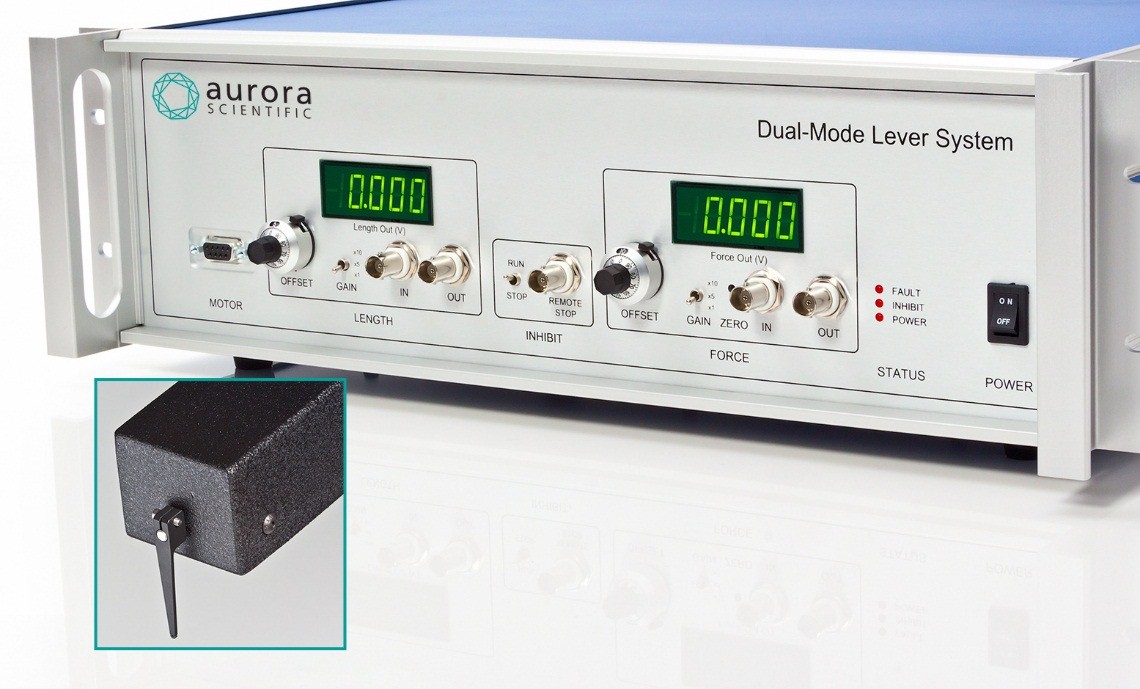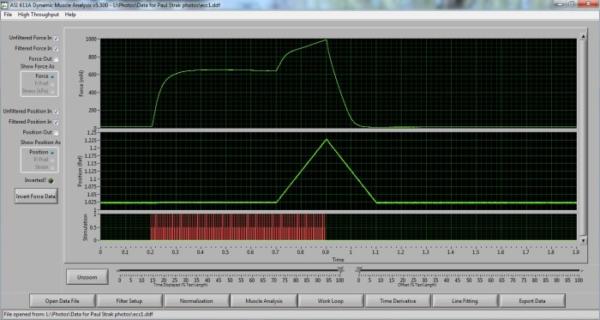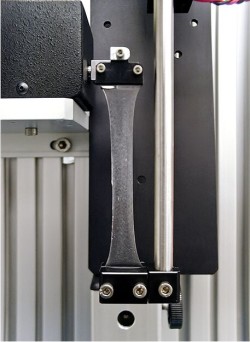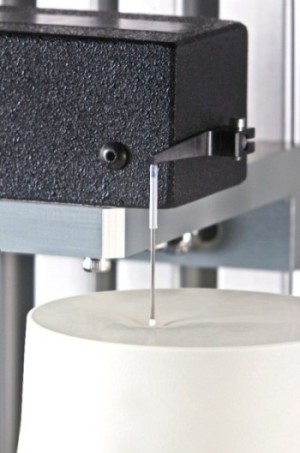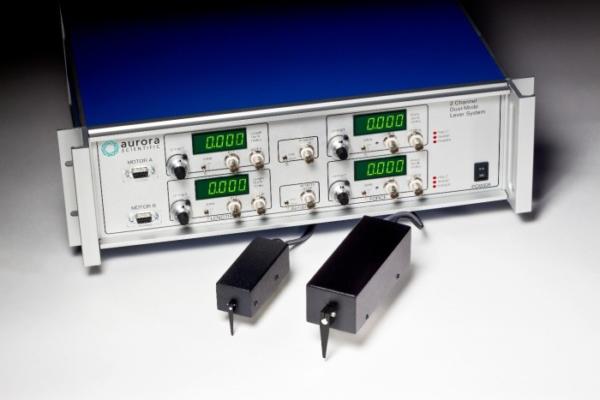Are you familiar with our 300C Dual-Mode Muscle Lever series, the center piece of our 1200A/1205A Isolated Muscle Systems and 1300A/1305A 3-in-1 Whole Animal Systems? Many researchers employ this robust, precise servomotor strictly as a force transducer measuring isometric contractions, but there’s more to this motor than simply measuring force!
The term “dual-mode” denotes the motor’s ability to control and measure both length and force while seamlessly switching between the two. This capability allows the researcher to perform all three types of contractions (isometric, eccentric/concentric and isotonic) with a single motor and therefore single attachment point, increasing throughput.
Below is a brief overview of what types of experiments Aurora Scientific’s 300C series of motors are capable of performing.
Modelling Exercise – Fatigue, Injury and Recovery
Controlling Length
Maintaining length while measuring force results in an isometric contraction. As we know, isometric contractions, although useful, do not accurately depict muscle response to exercise. Aurora Scientific’s dual-mode can also perform lengthening and shortening contractions (eccentric and concentric) by changing the length of the muscle prep while simultaneously measuring force produced . By controlling the length of the muscle (Fig. 1), you are able to more accurately model exercise and measure the effects of fatigue or injury on muscle recovery in numerous disease models.
Want to see how these contractions are utilized by researchers? Check out a couple of our JoVE videos below!
Figure 1. 611A Dynamic Muscle Analysis (DMA) software screen shot depicting a resultant eccentric contraction using the dual-mode lever system (ex. 5% of Lo lengthening contraction).
Controlling Force
Eliciting maximal contractions from your animal model or muscle prep is not the most physiologically relevant scenario since humans rarely exert themselves to their true, absolute maximum. Instead, humans aim for a percentage of some, safe, known maximum while completing multiple repetitions. Because the load does not change during exercise, it is defined as an isotonic contraction. Therefore, by controlling the force exerted by your animal model or muscle preparation to say, 80% of its maximum, this provides an experimental model of exercise under more physiologically relevant conditions. By using this model, you can then begin to test and compare the effects of force controlled exercise on factors such as disease phenotype, disease progression, molecular mechanisms and muscle mechanics, among others.
Figure 2. DMA software screen shot illustrating a series of isotonic contractions (plateaus in upper force trace) using the dual-mode lever system (ex. force control of muscle preparation to 140mN, 90mN and 120mN respectively). Data courtesy of Granzier Lab, University of Arizona.
Characterizing Mechanics of Natural and Synthetic Materials
In addition to muscle physiologists, bioengineers and material scientists have discovered the usefulness of the 300C Dual-Mode lever system. Tensile strength of artificial or physiological tissues and fibers can be easily measured by controlling length and force output.
Measurements can also be taken of the elasticity or stiffness of various biomaterials and polymers as well as nanowires and MEMS. Researchers can use the dual-mode motor to measure mechanical properties such as adhesion, shear fracture and deformation of a variety of materials.
Figure 3. 300C being used to perform mechanical testing of a synthetic polymer (Vivek Bharti lab, 3M).
Mechanical Stimulation for Study of Pain and Somatosensation
Figure 4. 300C-I Mechanical Stimulator depicting indentation of material with a specially designed indenter arm and tip.
Although Aurora Scientific’s 300C series of motors are commonly used to stretch muscle preparations, the 300C-I Mechanical Stimulator has also proved valuable to researchers in the field of Neuroscience. The 300C-I is designed to allow the researcher to push/indent skin tissue or nociceptors. This permits the measurement of neuronal response to this mechanical stimulation.
Commonly used in study of pain and somatosensation, our indenter is capable of producing consistent, precise force application, indentation distance, or area of stimulation to perform a variety of experiments.
Muscle-Nerve Preparation
Aurora Scientific’s 300C series of motors are most often used to measure the mechanics of isolated muscle tissue or whole animal ankle torsion. However, when integrated with the 809C-IV in-vitro Mouse Apparatus, the motor can be utilized with an intact muscle-nerve preparation.
This type of preparation has enormous value to neurophysiologists and neuroscientists alike. Not only can you measure muscle force, but you can also use this preparation to determine motor units, functional recovery from nerve damage and NMJ function or dysfunction.
Furthermore, the intact muscle-nerve preparation allows the researcher to stimulate the muscle directly to record the firing properties of muscle afferents as well as recording firing of afferents in response to passive stretch (ex. colorectal).
Figure 5. Dual-mode lever attached to our 809C-IV in-vitro apparatus measuring force produced from direct muscle or nerve stimulation. Courtesy of Wilkinson Lab, San Jose State University.
If you’d like to see Aurora Scientific’s motor utilized with the intact nerve-muscle preparation, take a look at these JoVE videos below!
In vitro Functional Characterization of Mouse Colorectal Afferent Endings
Simultaneous or Bi-Directional Measurement of Tissues
Recently, we released a new variant of the dual-mode lever for those experiments where one lever system is not enough! The 300D 2 Channel Dual-Mode Lever System provides the ability to control and measure length and force simultaneously in two similar or completely different preparations. We can build your 300D with any combination of our 300C or 305C models. Whether for mouse or rat, in-vivo, in-situ or in-vitro experimentation, the choice is yours!
Examples of Possible Dual-Channel Uses:
- dual footplate (double leg preparation for higher throughput)
- dual bath (mouse and/or rat muscle(s))
- dual animal (rat and mouse footplate)
- bi-directional stretching (tissues, polymers, films, etc.)
- dual mechanical stimulation (pain receptors and/or skin preps)
- combine any two of our 300C, 300C-LR, 305C or 305C-LR motors
Figure 5. 300D 2 Channel Dual-Mode Lever System, shown with a 300C (left) and 305C (right) motor.
If you’d like more information on writing isometric protocols or want to learn how to control muscle length using 615A Dynamic Muscle Control and Analysis Software , check out some of our previous blog posts!
How to Write Basic Protocols in DMC – Isometric
Control Muscle Length with DMC Software Using Reference Units

